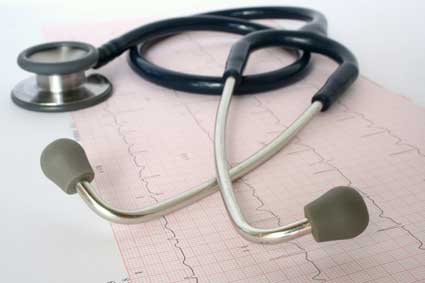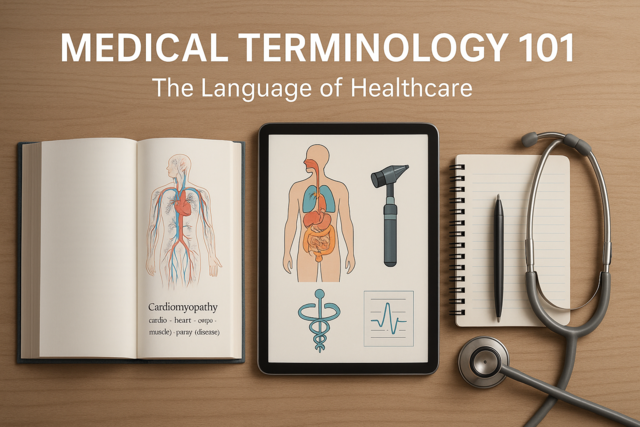Awareness of Symptoms With HIV
Introduction
Different people will experience symptoms of HIV at different rates or severity. One person might be symptom-free for years, while another may experience symptoms within a few months of transmission or diagnosis. It all depends on the individual, their overall health, age, living environment, and lifestyle habits.
Students should realize that the most common symptoms mentioned in this article are not the only symptoms an individual may experience. Some are rarer than others, and may be triggered by underlying medical conditions, or additional HIV-related diseases or reactions.
This article is only meant to give you a basic idea of the most common types of symptoms experienced by an individual with HIV. Keep in mind, however, that just because you have some of the symptoms mentioned in this article doesn't necessarily mean you have HIV. The only way to determine that is to visit your doctor and undergo a series of tests to receive a specific diagnosis.
Common HIV Symptoms
The most common symptoms of HIV virus infection include:
- Upset stomach
- Bouts of diarrhea that become more frequent over time
- A dry cough, not caused by cold or flu, that typically lasts more than several days
- Low-grade fever
- Swollen lymph glands found in the neck, armpit, or groin
- Rash
- Unexplained weight loss, or loss of appetite
- Eruption and presence of white patches or sores in the mouth
During the early stages of the viral process, an individual may experience cold or flu-like symptoms: a nagging cough that won't go away, a low-grade fever or a persistent sense of fatigue or weariness. These symptoms may also be associated with stress, anxiety, overwork, or changes in lifestyle or habits. You are the only person that knows how your body normally feels. It's difficult to express such vague or indefinable transitions or changes to a loved one, or even your doctor.
Headaches and sore throats are common to individuals during the early stages of the infection. These symptoms may occur within two to four weeks after infection, according to the Mayo Clinic. Some people may experience more severe headaches than others, as well as sore throats that come and go, or chronic or persistent sore throat for weeks at a time.
Lymph System
Swollen lymph glands are an obvious indication that the body's immune system is working extra hard to fight the virus. Lymph nodes may be felt directly beneath the jaw on each side of the neck, in the armpits, and in the groin. The lymph system, also known as the lymphatic system, involves various organs, ducts, and nodes. Lymph is a type of clear, watery fluid that carries immune cells through the body, often interacting with the circulatory system for transportation, as well as draining excess fluid from your body's cells and tissues.
Cells found in the lymph system are called lymphocytes, or white blood cells. These lymphocytes are small cells that actively battle against viruses and bacteria and protect the body against other invasions. Lymph nodes act as filters, much as the kidneys act as a filter for fluid wastes from the body.
Though small, the lymph nodes, which are bean-shaped, vary in size. Infected lymph nodes can swell to more than two or three times their normal size, ranging from several millimeters to one to two centimeters. Inside the lymph nodes is a honeycomb-type structure. When your body is fighting an infection, these lymph nodes produce many times their normal division of T and B cells, the body's major defense against infection, and the nodes grow larger to accommodate them.
Lymph nodes in the body tend to cluster in certain areas, such as the neck, armpit, and groin, which are the most common location for you or your doctor to feel them and determine if your lymph nodes are swollen or enlarged.
Tracking Symptoms
If you happen to notice a change in your overall physical condition, take notes and try to write down the dates that you started noticing symptoms, how you felt, and if they've stayed the same, become sporadic, or more frequent. Some people may feel extremely tired or fatigue following the initial stages of HIV infection, because the immune system is working overtime to fight off the infection, though without success.
It should be noted that even as early as the mid-1990s, nearly 95 percent of individuals received a positive HIV test within three months after infection or transmission, according to the Johns Hopkins AIDS Clinic, (Bartlett, J. M.D., Finkbeiner, A., "The Guide to Living with HIV Infection," The Johns Hopkins University Press 1996). Nearly all individuals who had contracted the HIV virus received a positive test result within six months.The same typically holds true today.
However, due to early diagnosis and treatment, positive strides in prolonging the gap between HIV and AIDS diagnoses have improved. As of 2008, diagnoses of AIDS cases has decreased "significantly" from 164 cases in 100,000 tested in the year 2007, to about 107 in 2008, according to the CDC Morbidity and Mortality Weekly Report ("Expanded HIV Testing and Trends in Diagnoses of HIV Infection," June 25, 2010 / 59(24);737-741).Individuals are still encouraged to make appointments with their health care provider within three months of an HIV-positive diagnosis to begin treatment.
Again, individuals may experience no symptoms at all and be completely surprised to receive a diagnosis. As with any viral, bacterial, or fungal infection, the body's immune system will kick in and work overtime to get rid of the infection. This may cause a drain on other body symptoms, which, over time, will result in lowered immunity against colds, flu bugs, and infections.
An individual may experience sudden and unexpected weight loss or changes in their digestive or bowel habits. A chronic or low-grade fever may be accompanied by an overall sense of anxiety. Other symptoms of HIV infections include a rash inside the mouth. This rash is caused by the Candida albicans fungus, an infectious type of yeast infection. The infection will present with white patches on the inside the mouth, on the gum line, on the tongue, or on the inside of the cheeks. This yeast infection also may be diagnosed as thrush. In most cases, this type of rash is fairly common in those with HIV, and nearly all individuals diagnosed with HIV experience this type of rash at least once.
It's impossible for your doctor to determine exactly what types of symptoms you'll feel, both for early and latter stages of the HIV disease process. As HIV eventually develops into AIDS, which can take months or a decade or more, you may experience new symptoms while other symptoms seem to fade away. Maintaining adequate contact with your doctor and tracking your symptoms, as well as the emotional and physical state of health and well-being, are an important process in managing and treating HIV.
Introduction
If you suspect that you or a loved one may be experiencing symptoms related to the HIV virus, schedule a visit with your doctor as soon as possible. A definitive diagnosis cannot be made without a variety of diagnostic tests, a physical examination, and analysis of symptoms. Because the HIV virus damages and hampers the function of the immune system, many people put off the doctor's visit because they believe they're merely experiencing a hard-to-shake cold or flu virus.
While HIV is spread through contact with infected blood or sexual transmission, such exposures do not typically elicit an immediate response in symptoms. For this reason, if you have been in contact with potentially HIV-infected blood or bodily fluid sources, or you believe a sexual partner may have HIV or AIDS, it's extremely important for you to undergo diagnostic testing at three months, six months, and even one year following the incident.
Visiting your Doctor
When visiting your family health care provider regarding questions about your health or your suspicion that you or a family member may have contacted AIDS, your doctor likely will ask a number of questions. The first question will address why you suspect you or a loved one have been exposed or infected with the HIV virus. Your doctor also will want to know about the types of symptoms that have been experienced, as well as their severity and duration.
The doctor also will ask some private questions regarding your sexual habits, lifestyle, and drug use. It's very important for you, a loved one, or a family friend to be honest when answering such questions. Without adequate and honest answers, the doctor may not be able to make a definitive diagnosis.
During the doctor visit, the physician will perform an overall physical exam. The doctor palpate or feel the areas around your neck, in your armpits, and your groin. In this way, he or she will be able to determine the presence of enlarged lymph nodes. Your doctor also will ask you to open your mouth so that he can examine the inside of the mouth and the gums for the presence of lesions or white patches common in early and later stages of HIV infection. The doctor will then palpate your upper and lower abdomen for enlarged organs.
During a routine physical exam, the doctor will listen to your lungs and inquire if you've had any muscle, nerve, movement, or mobility problems or issues. Be prepared to answer any questions, and don't be embarrassed. Your doctor will do his best to provide you with an accurate diagnosis, but will be unable to do so without your full cooperation.
Common HIV Diagnostic Tests
In order to determine a definitive diagnosis of HIV, the doctor may order a variety of laboratory tests. These tests examine bodily fluids, saliva, or blood for the presence of HIV antibodies. Be aware that these tests are not effective immediately after infection, because it takes a certain amount of time for enough of these antibodies to build up in the bloodstream to be discernible through analysis.
Antibodies for HIV usually will become apparent in the bloodstream within three to four months of infection with the virus. For some individuals, HIV antibodies may not show up in the bloodstream for up to six months. New tests and technologies are being developed to more quickly provide individuals and physicians with HIV positive results, so that earlier treatment plans may be initiated.
One of the most common tests for the presence of HIV antibodies is an antigen HIV test, which is a simple blood test. A newer test under development analyzes the presence of certain proteins produced by the virus within several days following potential infection date. While an early diagnosis won't change the course of the disease process, it is extremely beneficial to individuals in preventing the spread of the virus to others.
If you've tested positive for HIV, your doctor may ask you to undergo a variety of tests to best determine how to proceed with a treatment plan. Such tests also will enable the doctor to determine in what stage of the HIV disease process you are. Some of the most common tests in this area include:
- Drug resistance
- CD4 count
- Viral load
White blood cells are the major cells responsible for the protection against infections. White cells, often called soldiers or warrior cells, actively seek out viral, bacterial, and fungal infections.
In a healthy individual, the CD4 count ranges 500 to 1,000. However, as the HIV infection progresses through the body and bloodstream, white blood cells are damaged or destroyed. If a person's CD4 count hovers below 200, that person is considered to advance from the HIV viral stage of the disease to full-blown AIDS.
Drug resistance tests may be given over a period to determine which anti-HIV medications are most beneficial and effective for treatment. Remember that these drugs don't cure the disease, but may help reduce severity of symptoms and complications. The type of drug or medications you're given will be determined by how resistant the HIV virus is to these specific drugs. Drugs focusing on HIV attempt to inhibit replication of the virus, or inhibit their production. Some individuals may experience more benefits from this approach than others.
Another type of test a doctor might perform to determine treatment is called a viral load test. This test determines the amount, or concentration, of the HIV virus in the bloodstream. Higher viral loads create more problems for an individual than a low viral load. Individuals with a higher viral load may also experience more frequent and severe symptoms and HIV-related complications.
-
Counseling and Support
-
A positive HIV diagnosis is a blow not only to the individual receiving the diagnosis, but to his or her circle of friends and family. As mentioned before, an HIV diagnosis doesn't limit itself to physical symptoms and complications, but also involves the mental and emotional stability, strength, and coping mechanisms of the individual involved.
-
Individuals without close friends or family support can look to community clinics and professionals, such as nurses, counselors, and social workers who may be able to offer additional information and resources on coping with the disease process. Online HIV and AIDS communities, forums, chat rooms, and discussion groups are also a viable option for individuals seeking information and support throughout the process.
It's not easy to cope with any chronic illness or disease, and individuals diagnosed with HIV must deal with the social ramifications of the diagnosis, as well. Drug use, unprotected sex, and lifestyle play a large role not only in the transmission of HIV, but also in the ability to help prevent its spread.
Conclusion
If you suspect an HIV infection, talk to your doctor as soon as possible. While there is no cure to date for HIV, there are effective medications that may help slow the progress of the disease and help individuals lead fuller and more high-quality lives. Early diagnosis will not only help individuals start an early treatment program and help prevent the spread of the virus, it may also help doctors head off complications before they become apparent.
One of the most important responsibilities for an individual diagnosed with HIV is to prevent its transmission to others.





























